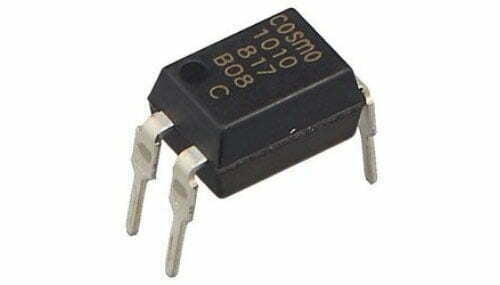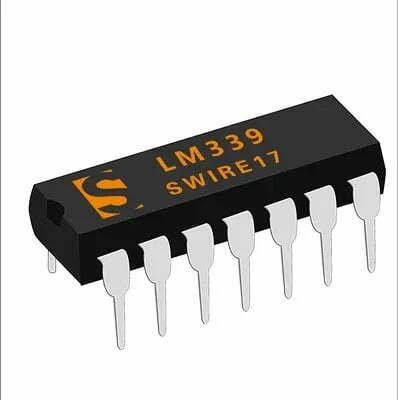What is a DSP Chip?
A digital signal processor, also known as a DSP chip, is a microprocessor tool especially suited for digital signal processing operations. Its host application is a real-time, fast implementation of various digital signal processing algorithms.
How does DSP Chips Work?
The function of the digital signal processor uses the Harvard architecture, which separates the program memory and the data memory. Special instruction set for single instruction stream, multiple data stream (SIMD) operations. Parallel processing is possible, but multitasking is not supported. When used in a host environment, it can be used as a direct memory access (DMA) device.
Data is obtained from an analog-to-digital converter (ADC), and the final output is the data converted to an analog signal by a digital-to-analog converter (DAC).
Capable of implementing one or more multiply-and-accumulate (MAC) operations in one instruction cycle. Therefore, multiple multiply and accumulate operation units are integrated into the DSP, which can perform parallel multiply and accumulate operations.
Multiple reads from memory can be accomplished in one instruction cycle. Therefore, multiple on-chip buses and multi-port on-chip memories are integrated with the DSP. To speed up operations in the processor, multiple address generation units are integrated into the DSP to support circular addressing and bit flipped addressing. Most operations in a processor are repetitive operations.
For ease of use, most DSPs support this repetitive operation without writing additional instructions for the repetitive operation. Most DSPs provide multiple serial or parallel I/O interfaces, as well as special I/O interfaces to handle special data, thereby reducing cost and improving output/input performance.
How to Choose DSP Chip?
Based on the introduction of the information, the selection of the digital signal processor has the following principles, which are summarized as follows:
1. Algorithm format
Fixed-point algorithms have a smaller dynamic range. For example, the dynamic range of a 16-bit fixed-point algorithm is only 96dB, which is prone to overflow problems, but has low cost and low power consumption. So most DSPs are fixed point, about 67%. Floating-point arithmetic has a large dynamic range, such as 32-bit floating-point arithmetic, which has a dynamic range of 1536dB. The processing speed is much higher than fixed point, and the bus width is wider than fixed point. Programming is easier, but it costs more and consumes more power. Floating point digital signal processors are mainly used in high-end products.
2. Data width
All floating-point DSPs are 32-bit wide, while fixed-point DSPs are mostly 16-bit wide, but also 24-bit, such as Motorola’s DSP563xx series. and Zoran’s ZR3800 series (both 20 bits). The data width directly affects the size of the DSP chip, the number of package pins and the capacity of the peripheral memory, so it directly affects the cost of the DSP.
3. Running Speed
When choosing a DSP, speed is the most important consideration. The speed of a DSP is usually the time of instruction cycles, but it also refers to the computation time of core functions such as FIR or IIR filters. Some DSPs use a very large instruction word (VLIW) structure that can execute multiple instructions in one cycle. It is closely related to the operating frequency of the clock.
4. Memory structure
The memory structure (including the bus structure) has a great influence on the performance of the DSP. On the one hand, different methods have different speeds on how to read data and instructions while performing operations. Read one instruction and two pieces of data in one instruction cycle for fast MAC operation. The structure can be a multi-port memory, separate memory for instructions and data, or an instruction buffer. On the other hand, the memory structure also includes the size of the memory supported on-chip and off-chip. Most fixed-point DSPs target the embedded system market, so their memory is small. Although some floating-point DSPs have smaller on-chip memory, they require larger peripheral memory, such as TI’s TMS320C30.
5. Power consumption
Many DSPs are used in portable devices such as mobile phones, PDAs and portable audio players. Power consumption is a major consideration for these products. Many processor vendors have reduced operating voltages (e.g. 3.3V, 2.5V, 1.8V) and added power supply voltage management features such as adding a “sleep mode” that cuts off most power when not in use and unused peripheral equipment. Reduce energy consumption.
6. Easy to program
The application objects of DSP are mainly engineering technicians and engineers. Early digital signal processors were programmed in assembly language, and later products could be written in C, but they had to be compiled into assembly language source programs by a C compiler and optimized to reduce computation time. DSP vendors often provide development tools. But the DSP products of different companies differ greatly in software programming. Therefore, users should choose a development tool with which they are more familiar. These tools include software tools such as assembly language programs, linkers, simulators, debuggers, compilers, code libraries, real-time operating systems, etc. Hardware tools such as development boards, emulators, etc.
7. Price
Cost is also an important consideration in mass production. Device packaging also affects chip cost. Grid array (PGA) packaging is more expensive than plastic packaging PQFP and TQEP.
8. Whether to support multiple processors
If particularly fast computations are required, multiple processors can be used to work in parallel. At this point, the internal connections of each processor can be an important issue. The ADSP-2106x from Analog Devices provides dedicated hardware. It has a bidirectional address bus and data bus and works with six bidirectional buses. It is easy to connect up to six processors into a system via a common external bus.






